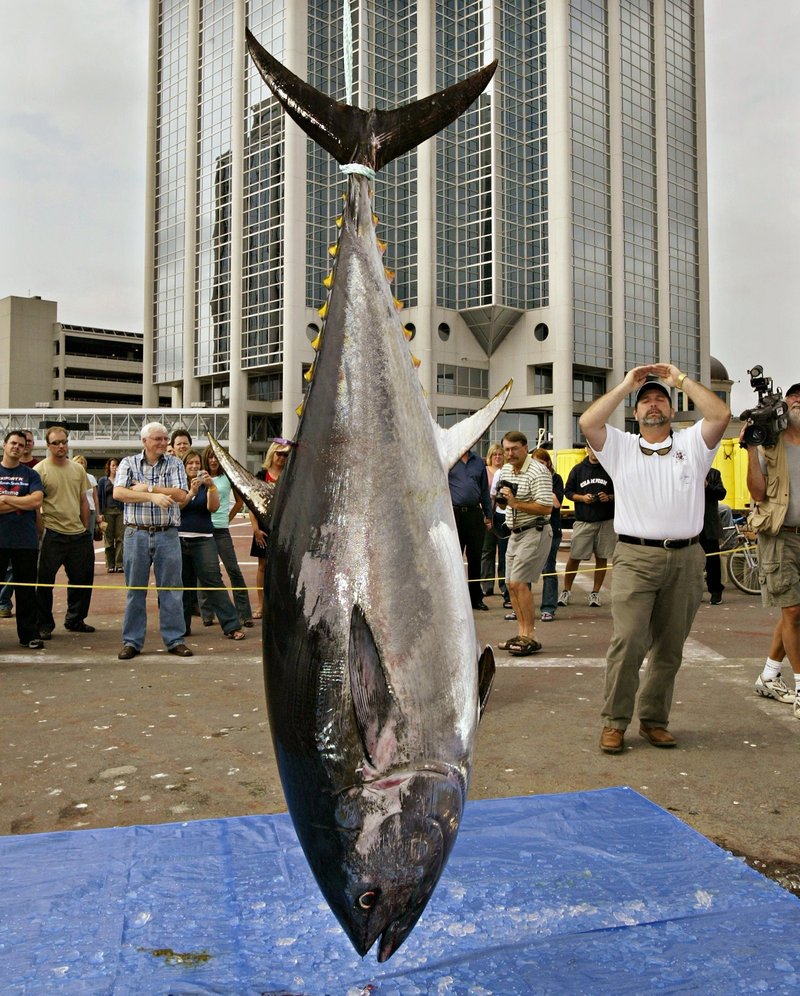NEW ORLEANS — The National Marine Fisheries Service will study whether the Gulf of Mexico oil spill has depleted the population of Atlantic bluefin tuna to the point that the food fish should be placed on the endangered species list.
The fisheries service will make a recommendation by May 24, 2011 – a year after The Center for Biological Diversity filed its petition. The center provided enough scientific information to warrant protecting the fish under the Endangered Species Act, the fisheries service said on its website in September.
Bluefin begin spawning in the northern Gulf of Mexico in April – when BP PLC’s undersea well blew wild and began spewing millions of gallons of oil – and continue through June. then, more than one-third of federal waters were closed to fishing because of that oil. The only other place bluefin are believed to spawn is the Mediterranean Sea.
“Any eggs or larva that happen to float into the oil would probably die,” said the center’s attorney, Catherine Ware Kilduff. Mating itself is stressful, so spawning adults would be more vulnerable to harm from the oil, she said.
Adult bluefin can cross the Atlantic in less than two months. Those spawning in the Gulf of Mexico, known as the western Atlantic population, then spread throughout the ocean, including rich fishing grounds along the East Coast.
The center and other environmental groups say bluefin had been headed for extinction long before the April 20 rig explosion that unleashed the spill, though other researchers counter that the fish’s numbers remain strong. Numerous studies have been done on the bluefin’s population, though few are universally accepted.
Molly Lutcavage, a professor at the University of Massachusetts and until recently director of the University of New Hampshire’s Large Pelagics Research Center, said recent data showed a bluefin resurgence in the western Atlantic.
Catch numbers are a poor gauge of the tuna’s population, added Lutcavage, who also is a member of the international commission that sets catch limits for Atlantic tunas.
“We can be out for days and days trying to catch bluefin to put satellite tags on them. If fish aren’t biting, we don’t get any,” she said. “But our eyes and spotter plane and sonar show schools of fish available but not being caught.”
The Center for Biological Diversity contends the western Atlantic bluefin population has fallen more than 80 percent from 1970 to 2007, mainly because of high demand on the sushi market, where it’s known as “maguro.” For instance, a 513-pounder was auctioned for $177,000 in January in Japan, the center said in its petition.
However, Mark Godfried of Gloucester, Mass., who works for tuna buyer Maguro America Inc., said fishermen are seeing more bluefin now than ever. He has fished tuna commercially for more than a decade.
He said Maguro America’s boats are catching their quotas within three hours, and catching many small tuna, indicating a very large breeding population somewhere in the Atlantic.
The Center for Biological Diversity’s petition is “just another attempt by environmental terrorists to cut down on the ability of American fishermen to make a living,” he said.
Massachusetts lawmakers say that European overfishing is the tunas’ biggest problem, and that listing the fish as endangered in the U.S. would hurt Bay State fishermen.
Send questions/comments to the editors.



Success. Please wait for the page to reload. If the page does not reload within 5 seconds, please refresh the page.
Enter your email and password to access comments.
Hi, to comment on stories you must . This profile is in addition to your subscription and website login.
Already have a commenting profile? .
Invalid username/password.
Please check your email to confirm and complete your registration.
Only subscribers are eligible to post comments. Please subscribe or login first for digital access. Here’s why.
Use the form below to reset your password. When you've submitted your account email, we will send an email with a reset code.